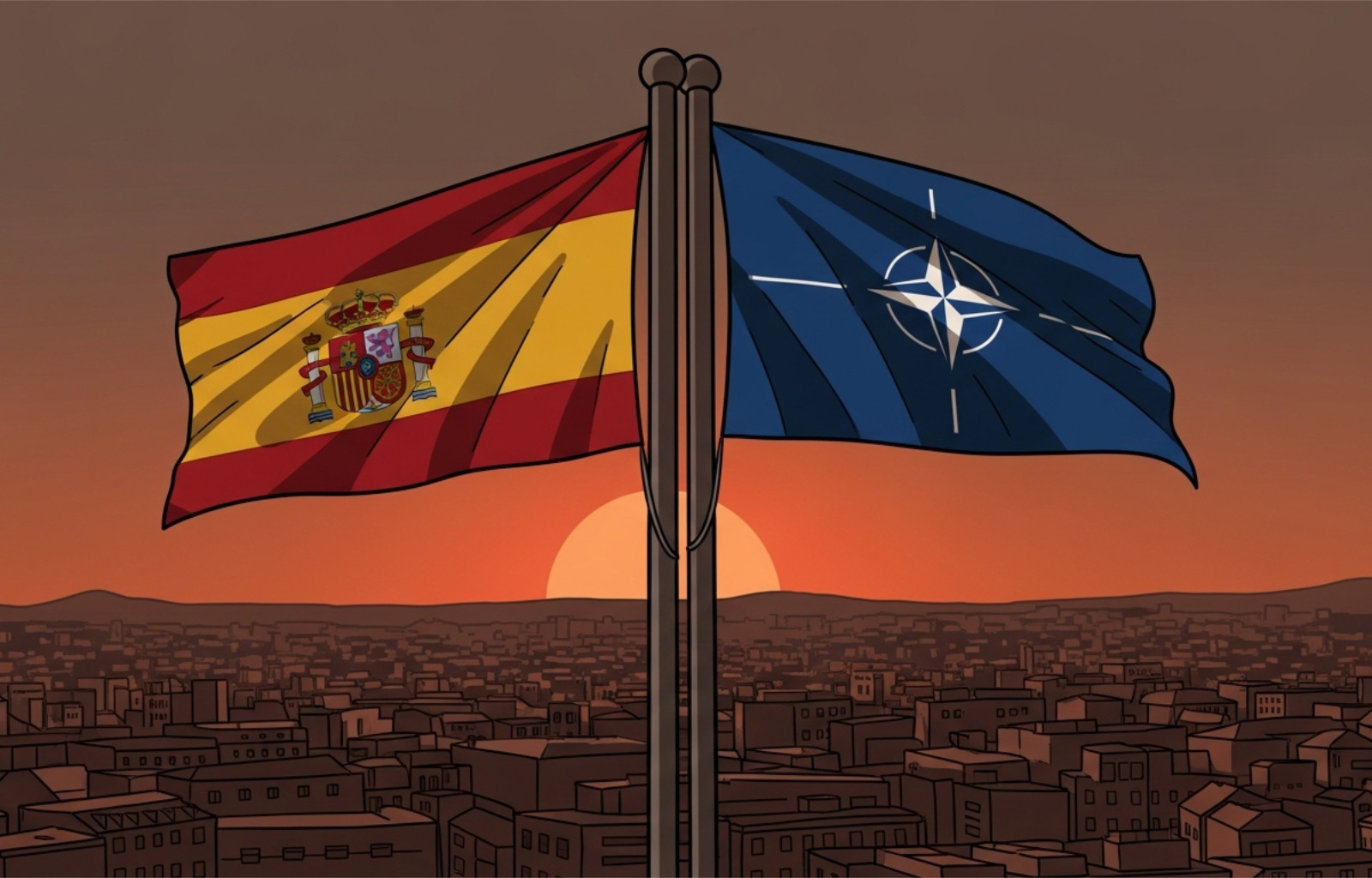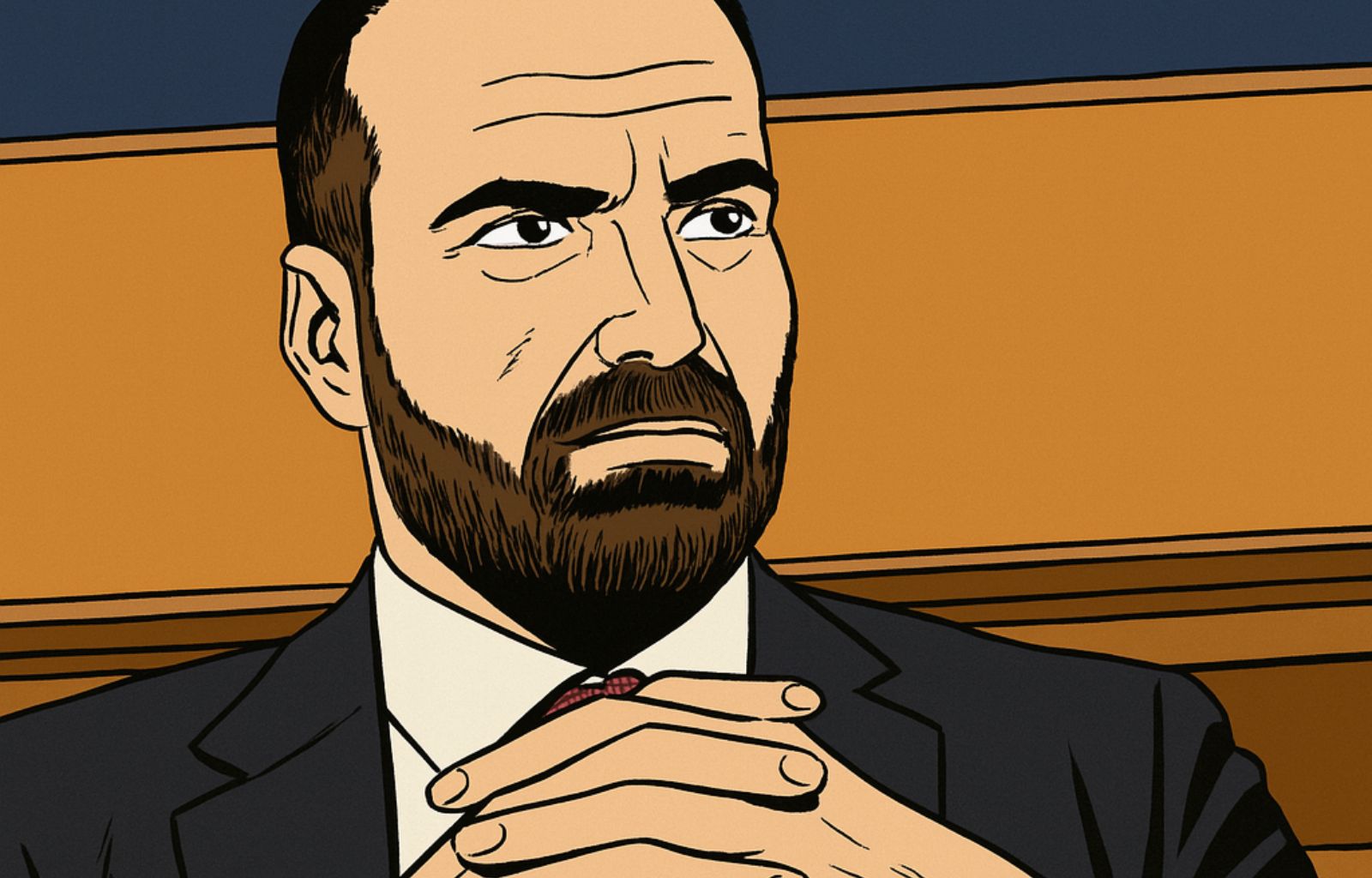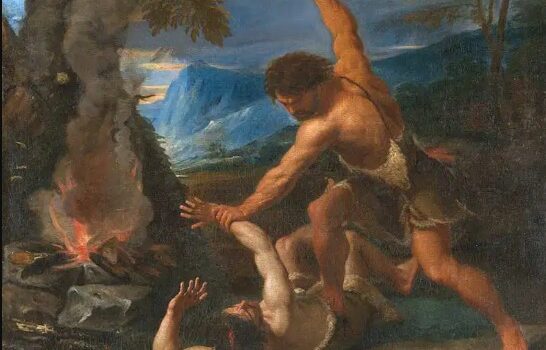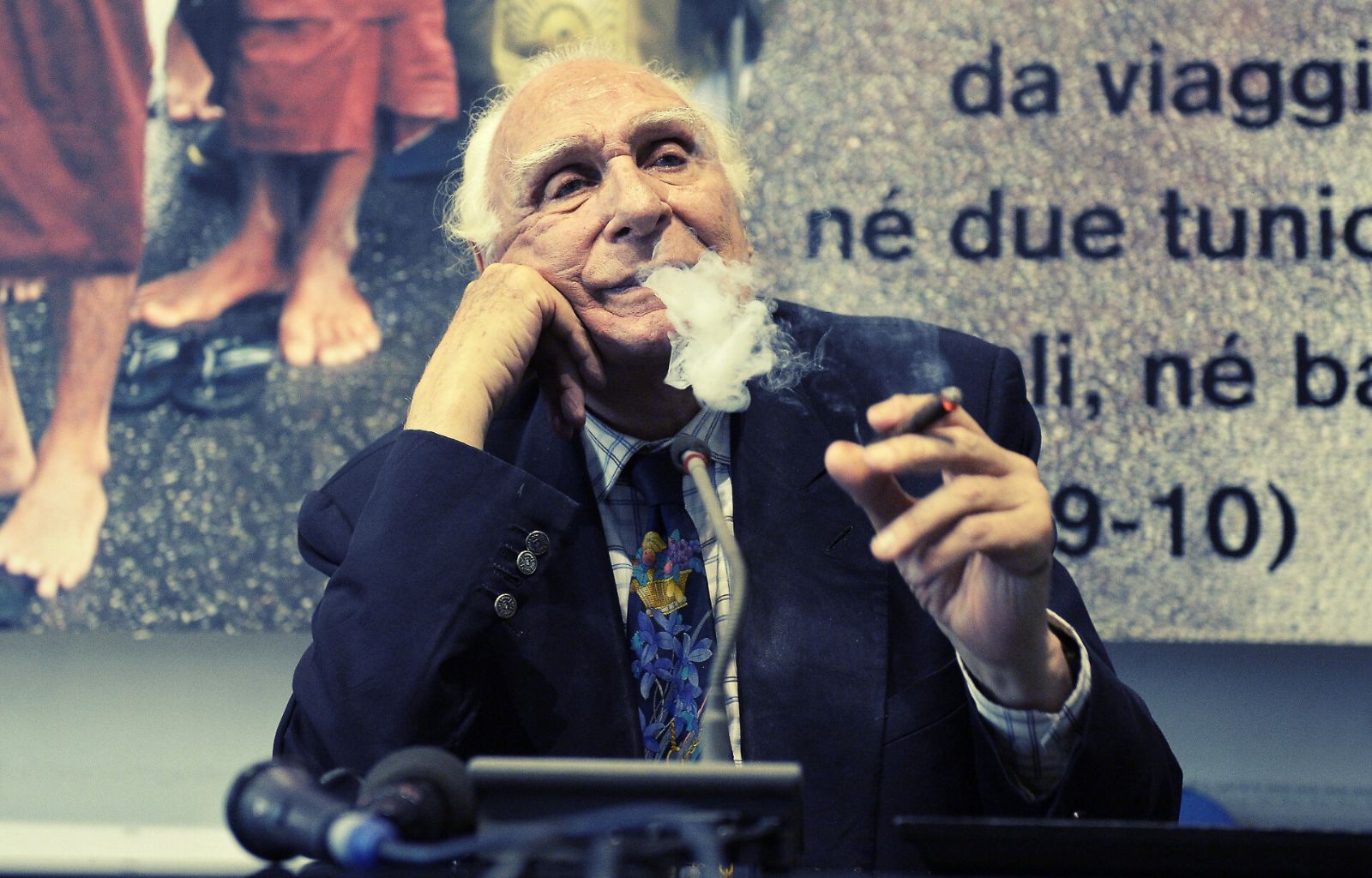How did Our Lady’s crown end up inside the European flag?
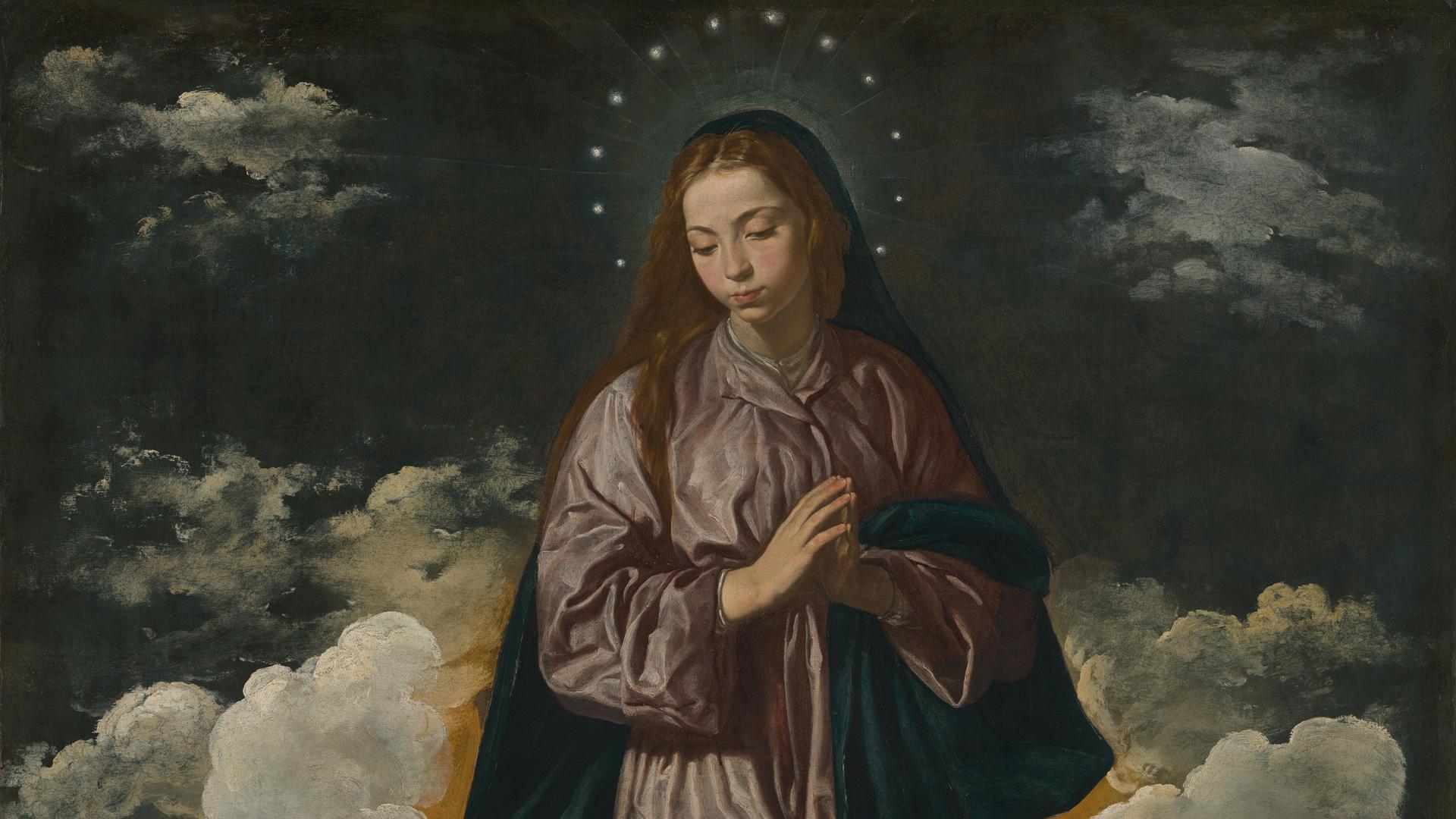
The crown of twelve stars is first described in one of the visions of Revelation, the book that concludes the Christian Bible by revealing what should happen at the end of time.
It is worn by a woman “clothed with the sun” and “with the moon under her feet”, who gives birth to a child “destined to rule all nations with an iron sceptre”. After giving birth, the woman must face the onslaught of a dragon.
Frescoes with this vision of the Revelation were already widespread in the late Middle Ages, but it was in early modernity that the woman crowned with stars began to be definitely identified with Mary in the popular worldview.
The Virgin was painted with the twelve stars by the most celebrated Baroque painters, including Rubens, Guido Reni and Velazquez. Countless devotional statues in almost every parish in Europe depict her with this ornament.
The Romans have been accustomed to seeing her since 1615 atop the column in Piazza S. Maria Maggiore and since 1857 atop the column in Piazza di Spagna, while the Milanese have seen her towering on the highest spire of the Duomo since 1769. As for the Neapolitans, they are familiar with the Madonna of Pompei, also wearing the unfailing crown.
The reason for this can be guessed. On the one hand, the Protestants had questioned the cult of the Virgin, accusing it of being a heathen superstition: so the Catholics, in response, exalted Mary’s heavenly queenship even more by cladding her in the mighty symbols of the Revelation.
On the other hand, the European Christian kingdoms had survived the aggression of the Turks and their smaller allies with some crushing defensive victories, first and foremost that of Lepanto (7 October 1571, still the greatest naval battle in history in terms of number of ships and men).
Pope Pius V attributed the victory to the miraculous intervention of Our Lady of the Rosary, who from then on was celebrated on 7 October and was increasingly depicted crowned with the twelve stars.
Later, in Central Europe, Polish rulers ritualised the crowning with the twelve stars of the icon of Częstochowa, to whom they gave credit for their historical triumph over the Turks (which took place on 11 September 1683 in Vienna).
In more recent times, the Poles have attributed to the same icon the victory over Trotsky’s Red Army on Assumption Day 1920: a little-known but decisive battle that prevented Soviet communism from spreading across the old continent exhausted by the war.
In short: the spread of the image of Mary with the twelve stars increased whenever someone felt that European civilisation, taken as a whole, had overcome an existential danger.
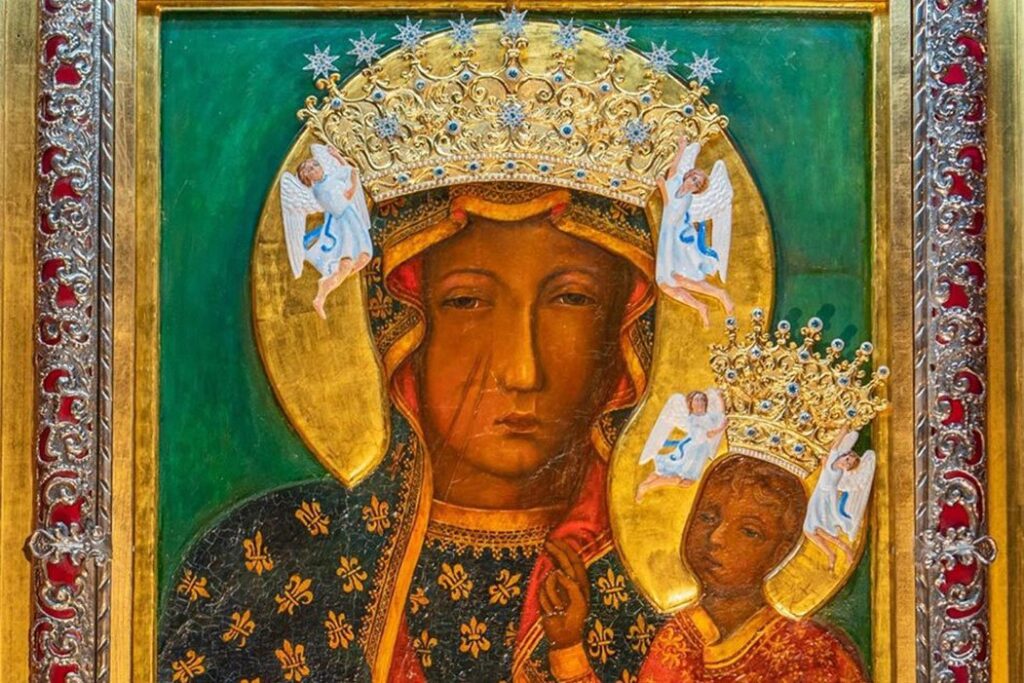
The icon of Częstochowa with crowns affixed
Twelve stars in millions of pockets
The story of the ‘miraculous medal’ in rue de Bac is no exception, at least from the point of view of its protagonists.
The Virgin is said to have begun appearing to the young nun Catherine Labouré in July 1830, while a successful revolution transformed France into a constitutional monarchy, abruptly ending the Catholic Restoration. The terror of a new extermination like that of Robespierre’s years must have been palpable among believers.
As we know, nothing of the sort happened, but by then the apparitions had taken place, the medal commemorating them was soon minted and its enormous circulation definitively ensured the popularity of Our Lady with the twelve stars.
If estimates are reliable that over a billion were coined during Catherine Labouré’s lifetime alone, the people who saw the twelve stars on the edge of that medal could be as numerous as those who saw them on the reverse of a euro coin.
That is why, if we had asked any of our grandmothers and great-grandmothers in the mid 1900s: “What does a crown of twelve stars make you think of?”, the most likely answer would have been: “Our Lady”.
Many of them, perhaps, in front of an image of Mary crowned with stars, had wept, prayed, made vows for what they held most dear, sought answers and found the strength to help suffering people, all the more so in terrible years like those of the world wars. To call all this ‘heathen superstition’ with a snooty air does not necessarily negate its value.
And this was the imagery in which graphic designer Arsène Heitz and most of his acquaintances were immersed when the competition to choose a European flag was announced.
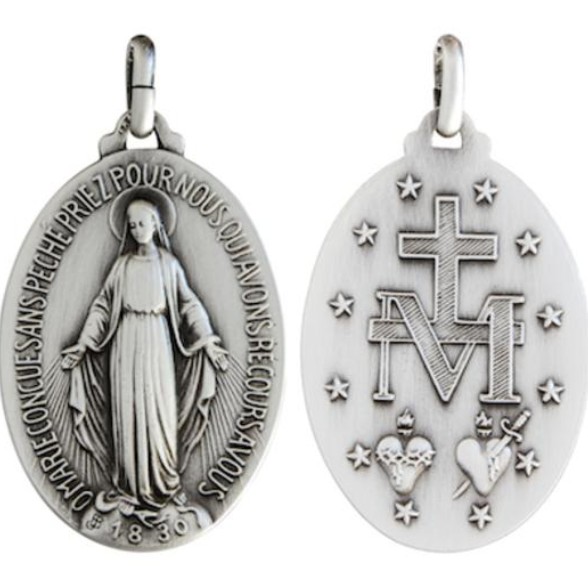
Front and back of the ‘miraculous medal’ in Rue de Bac
The flag
There are several speculations as to where Heitz got the idea for the flag with the twelve stars.
His devotion to the ‘miraculous medal’ was revealed by himself in an interview, although this followed the birth of the flag and is therefore not entirely reliable.
Some claim that he may have been inspired by a stained glass window in a church in Strasbourg. Others have seen a reference to the sumptuous vault of the Palazzo Barberini, frescoed by Pietro da Cortona, where the European Charter of Human Rights was signed in 1950.
At that time, to tell the truth, the pro-European project did not fare well. In 1954 the European Defence Community and the European Political Community had been rejected: what remained was a trade agreement on coal and steel, binding six countries, and a mild Council of Europe with no decision-making powers, extended to some fifteen countries. It was the latter that the flag was supposed to represent.
The jury, chaired by Paul Lévy, had to choose from dozens of sketches with the most varied symbols: from crosses to wind roses, from the sun to shields, from a large ‘E’ to the rings of a chain up to the more classic horizontal bands. With stars alone there were 15 designs.
Two flags with stars on a blue background came to the final round.
The one arranging them in a crown seemed the most beautiful and effective, but on their number the jury could not agree.
A number higher than 14 would have risked coinciding with the number of states in Europe, triggering endless arguments about which states should be recognised and which should not. 13, in the opinion of the Italians, was bad luck.
The version with twelve stars, on the other hand, raised no objections. All members of the jury were apparently comfortable with it.
While submitting his symbol, Heitz had illustrated its meaning with vague and generic references: according to him, 12 would refer to the constellations of the zodiac and thus to perfection, fulfillness and unity among peoples.
It is all too obvious to note that the same virtues could have been equally well expressed by other numbers, such as 10 (the perfect and sacred number for the Pythagorean tradition, to which we owe the European habit of counting in decades), 8 (which in the Middle Ages had inspired infinite octagonal buildings as symbols of cosmic totality) or the very classic 3. Numerology is a rather flexible art and can provide more or less any meaning to any number.
The learned pagan poetry of the Hellenistic age, for example, had told how Bacchus, in making Ariadne immortal, had thrown her crown into the sky, transforming it into a constellation with nine stars.
Finally, why not the 1? (The blue flag with a single star, moreover, had been among those competing, and had been discarded with the excuse that it was too similar to that of the Congo).
It is undeniable, in short, that among so many combinations the very crown with twelve stars resonated something familiar in the members of the jury – people, let us remember, who were almost all born in the late 19th century in Christian countries.
This could also explain the bizarre coincidence that the official resolution on the flag, which could have been passed on 7 December 1955 on the first day of the Council of Europe session, was instead delayed to the 8th, on Immaculate Conception Day.
The traditionalist Catholic blogosphere considers this to be an accidental event intended from above to give a divine sign: we, with sceptical humility, prefer to imagine that it was done on purpose by some of the gentlemen present to give a very human sign.
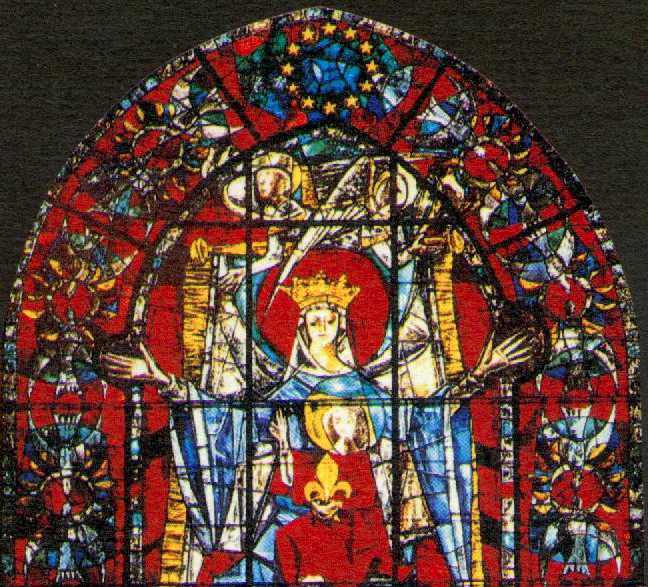
The stained glass window that the graphic artist A. Heitz would have seen in Strasbourg in the Church of Our Lady of Peace.
The Jewish origins of the symbol
But who was really the star-crowned woman who gave birth to the Messiah and confronted the dragon, in the intentions of the author of Revelation?
Since the end of the 19th century , philologists who have studied the biblical texts according to the historical-critical method have dealt with this question . And the most accepted hypothesis is that the mother of the Messiah, like the other two women described in the book (the Harlot and the Bride), represented the Jewish people.
The great prophets like Isaiah and Ezekiel, in fact, had often described Israel as a woman and her relationship with Yahweh as a love affair. In Ezekiel, even, Yahweh says to the beloved woman: “I put a splendid crown on your head”.
As for the number 12, it recalls the children of Israel throughout Revelation, as well as in the Gospels: twelve are the apostles, twelve are the baskets of leftovers after the multiplication of the loaves, twelve are the gates of the heavenly city, 144,000 (12×12 thousand) are the saints with Jewish background.
Thus, what popular devotion and ‘Lepanto-mania’ turned into an emblem of Our Lady was born, with good chance, as an emblem of God’s chosen people, and thus had a political value, as well as a religious, one, from its very beginning.
Tajani’s mess
Of this fascinating history, well documented in all its passages and the subject of rigorous studies, Italian foreign minister Antonio Tajani has evidently only perceived a few excerpts confused by word of mouth.
Thus, a few days ago, he published an embarrassing tweet in which he extolled the European flag ‘as blue as the mantle of the Madonna with the twelve stars of the tribes of Israel arranged in a circle’.
A rambling statement that is neither in heaven nor on earth and which, even if made in good faith, clashes with his institutional role.
It is one thing to recognise the continuity between a millenary and much-loved Christian symbol (which is the crown, not the colour blue) and the flag of the bloodless postmodern Europe. It is one thing to recognise that that thousand-year-old and much-loved Christian symbol had, like any other, Jewish origins that have since fallen into oblivion.
But to suggest that the official heraldry of the European flag consists of the mantle of the Virgin Mary and the tribes of Israel is nonsense.
Of course, even worse than Tajani’s tweet have been the tweets of Tajani’s detractors, improvised fact-checkers who have given remedies worst than disease and shown greater ignorance than his.
Come on: are there really still people in 2025 who react with annoyance, contempt or hatred to the idea that the symbol of today’s Europe comes from Christian civilisation (like almost anything in today’s Europe, starting with the secular state)?
If the answer is yes, we can only feel sorry for them and wish them a speedy and happy exit from adolescence.

